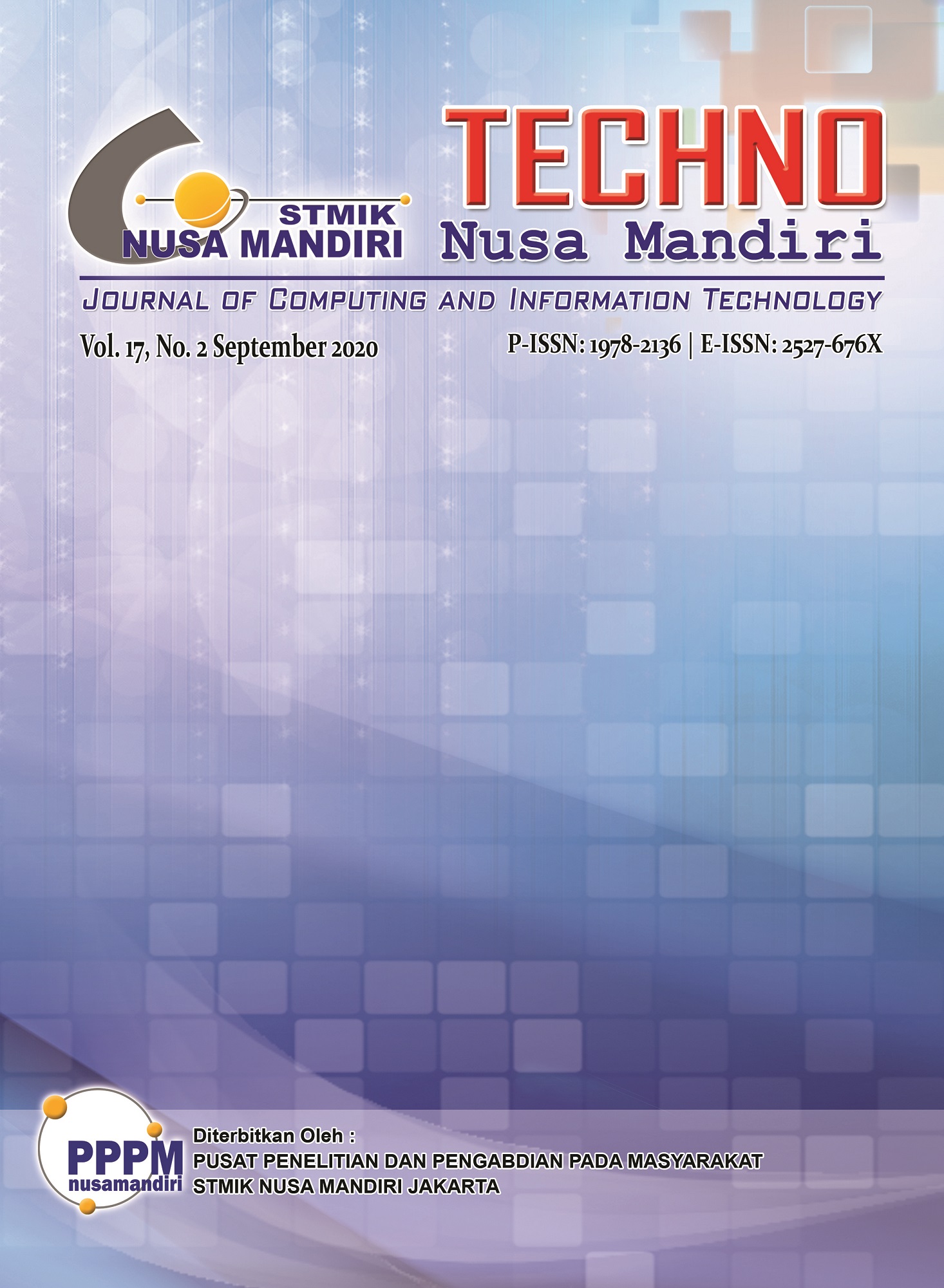SENTIMENT ANALYSIS ON TWITTER OF PSBB EFFECT USING MACHINE LEARNING
DOI:
https://doi.org/10.33480/techno.v17i2.1635Keywords:
twitter,, data mining,, analisis sentimen,, KNN, Decision Tree AlgorithmAbstract
A collection of tweets from Twitter users about PSBB can be used as sentiment analysis. The data obtained is processed using data mining techniques (data mining), in which there is a process of mining the text, tokenize, transformation, classification, stem, etc. Then calculated into three different algorithms to be compared, the algorithm used is the Decision Tree, K-NN, and Naïve Bayes Classifier to find the best accuracy. Rapidminer application is also used to facilitate writers in processing data. The highest results from this study were the Decision Tree algorithm with an accuracy of 83.3%, precision 79%, and recall 87.17%.
Downloads
Published
How to Cite
Issue
Section
License
The copyright of any article in the TECHNO Nusa Mandiri Journal is fully held by the author under the Creative Commons CC BY-NC license. The copyright in each article belongs to the author. Authors retain all their rights to published works, not limited to the rights set out on this page. The author acknowledges that Techno Nusa Mandiri: Journal of Computing and Information Technology (TECHNO Nusa Mandiri) is the first to publish with a Creative Commons Attribution 4.0 International license (CC BY-NC). Authors can enter articles separately, manage non-exclusive distribution, from manuscripts that have been published in this journal into another version (for example: sent to author affiliation respository, publication into books, etc.), by acknowledging that the manuscript was published for the first time in Techno Nusa Mandiri: Journal of Computing and Information Technology (TECHNO Nusa Mandiri); The author guarantees that the original article, written by the stated author, has never been published before, does not contain any statements that violate the law, does not violate the rights of others, is subject to the copyright which is exclusively held by the author. If an article was prepared jointly by more than one author, each author submitting the manuscript warrants that he has been authorized by all co-authors to agree to copyright and license notices (agreements) on their behalf, and agrees to notify the co-authors of the terms of this policy. Techno Nusa Mandiri: Journal of Computing and Information Technology (TECHNO Nusa Mandiri) will not be held responsible for anything that may have occurred due to the author's internal disputes.
















